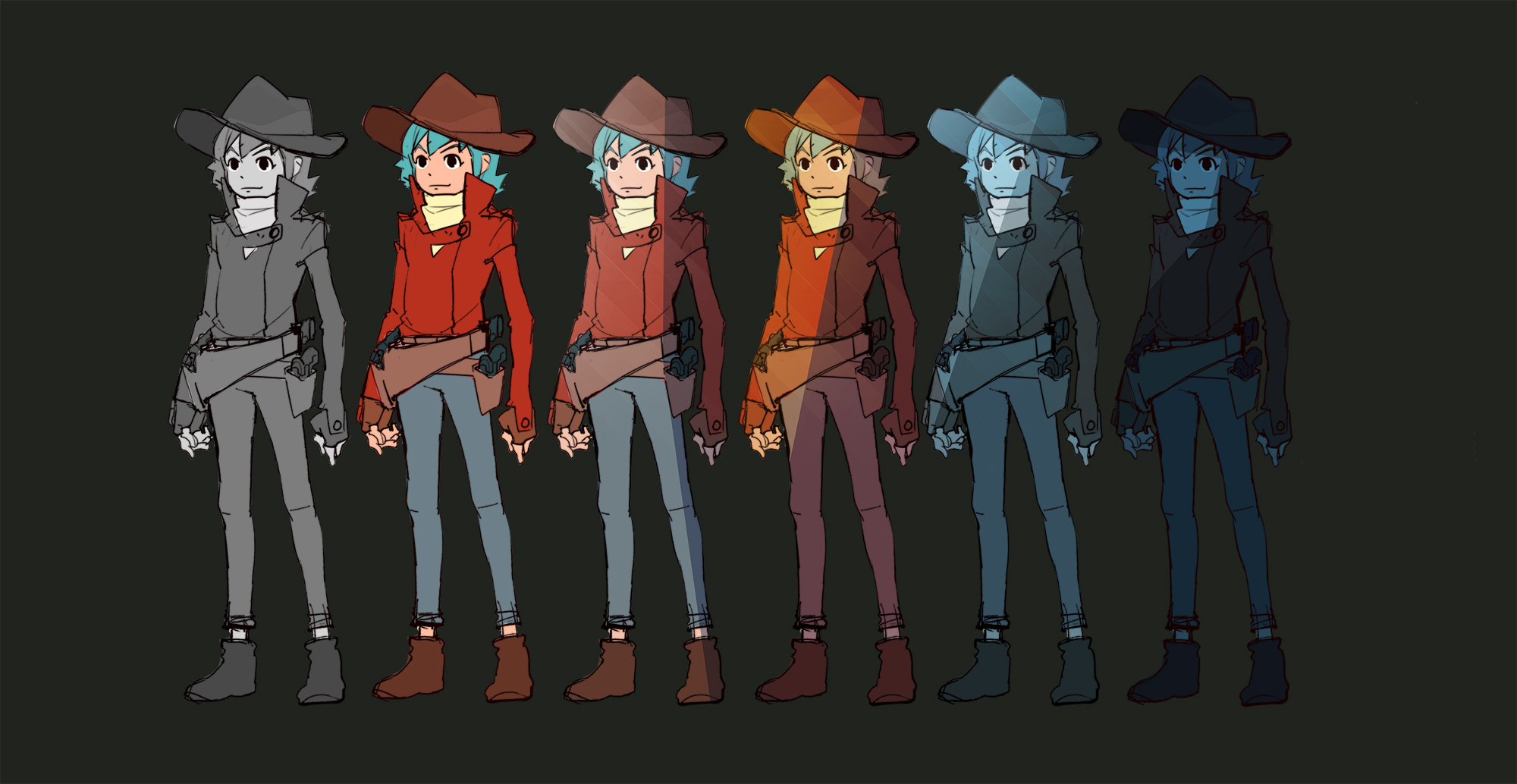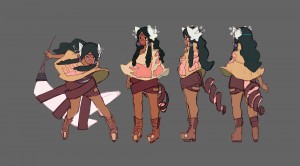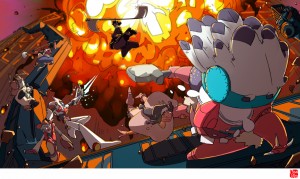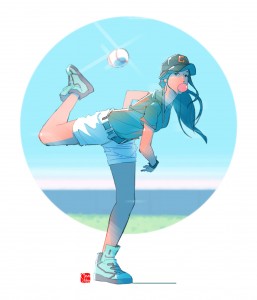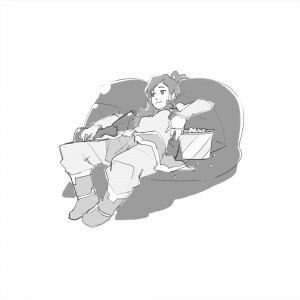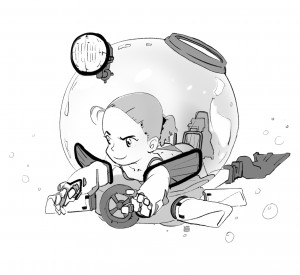There is something about animation that draws viewers young and old to the screen. When you think of animation studios that created your favorite films and TV series, a few major players come to mind. Steven Ahn is the director at Dreamworks Animation TV. From childhood Mr. Ahn had a desire to be in animation, soon after he moved to the United States where he attended California Institute of the Arts for character animation and has succeeded in an animation career ever since. We had the opportunity to interview Steven recently and talk with him about his inspiration, design process, and future projects. Here are highlights of our conversation.
Tell me a bit about yourself- How did your life in art begin?
I’m a director at Dreamworks Animation TV. I’ve been working as a director and storyboard artist in the American animation industry for about 9 years. Some of the animation projects that I was part of in the past that you may know are ‘AVATAR : THE LEGEND OF KORRA’, ‘BEN 10: OMNIVERSE’ and ‘TMNT.’
For the first half of my life, I grew up in South Korea, watching many Japanese anime cartoon shows on TV. Back then, it was in between the late ’80s and early ’90s, it was before the Korean Animation Industry boom. Most of TV networks just aired many imported Japanese cartoons and some American. As a child, I always loved watching those anime shows. I used to draw ‘Dragonball’ characters daily in my sketchbook. Every time I watched animation, talked about animation or even read about any animation-related article, my heart was burning like a fire with indescribable excitement and joy, making me think, ‘I want to create animation too!’ I didn’t dare imagine it as a realistic dream until I came to America, because back then in Korea, working for an animation company was treated as an underpaid job and not a promising career. I was pretty sure that my parents wouldn’t allow me to pursue it.
After I came to America, I was desperate to figure out what I was going to do with my life. I think my brain kept searching and searching for a way, trying to find an explanation of my unseen future, but I felt like my heart already knew from the beginning, the way that I should go. I feel like my soul has been craving to create art and animation all along in my life, telling me that ‘this is what I am made for,’ ‘this is the purpose of my life,’ and ‘this is what I love to do.’ Once I realized that, I didn’t hesitate to decide to become an artist. Nine months later, I was accepted in CalArts character animation program. My life as an animator began at that moment.
What are your favorite personal pieces of art? What do they mean to you?
I don’t think I ever liked any of my work from the past. Usually, whenever I look at my old pieces, I regret how terrible my skill was. For now, I want to say that my favorite personal piece of art is likely to come soon in near future. Meanwhile, I can share some memorable works.
Golden Boy & Ironwalker – this is the very first show idea I developed a few years ago with my good friend, a great writer, Calvin Leung. We worked so hard to make this idea solid good. We’ve been pitching this idea around several major networks to get invested and are still looking for any other opportunities to make this happen. I have a feeling that someday this will be on TV.
Baseball Girls – These pieces were made shortly after I started to share my work online. I remember because these pieces were favored by many good fans, I was able to make new friends and connections in an online artist’s community, experiencing new ways of interacting with artistic people.
Korra – This was a fan art tribute to ‘The Legend of Korra.’
Submechrine Series – I named it, ‘Submechrine.’ It is a somewhat realistic, yet imaginative mech-tech concept, a combination of submarine and robot. I think this series reflects well what I would like to create most within animation.
I don’t like abstract art. I simply don’t relate to it. I think that tendency still continues in my animation and art creation where rather than creating a very cartoony character and a cartoony world setting, I love crafting realistic characters in a realistic world view, faces are relatable. I think the Submechrine series shows this reflection of my tendency. It is somewhat realistic with imaginative ideas.
Can you describe your working process from idea to finished product?
I usually don’t even put my pencil down to draw until I have an inspiration. Even when the deadline is coming around the corner, I wait and wait until I have an inspiration. Once I get inspired, the idea naturally develops and then I move to execute it.
What are some key ideas to help anyone determined to become an established artist?
I believe an individual thrives when the individual drives art into his or her own design, reflecting his or her own intention. Many times we get distracted by what others tell us to do and to create. You don’t have to follow others and their creations. Create what you want to create. It is your art and your life – that’s where exciting joy comes from, what we artists enjoy.
Can you tell me three artists that inspire you and why?
There are many well-known artists and famous directors that I love. Yet, I think inspiring artists whom actually impacted and shaped my art most have been people around me, not the famous people whom I’ve never met.
In a past project, The Legend of Korra, I was working with three amazing supervising directors, Joaquim Dos Santos, Lauren Montgomery, and Ryu Ki Hyun. It was the most unique experience I had ever had. I remember the first time I saw their work and storyboard’s direction, I was so shocked, it put me in complete awe. Their story work is probably one of the best executions in the action-adventure genre. Their amazing work has been a great inspiration to me. And, even beyond talking about their art, their leadership as directors in the production came to me like a good role-model that I should learn.
What does the future hold for you; what is next?
In the short term, my first directed TV project is waiting to debut. In the long term, I want to keep growing. I simply want to be a good director. Unlike making a feature animation film, executing an animated TV show has many limitations, like smaller budget, a smaller crew and short production schedule. It makes it hard to add mise-en-scene and create a rich drama in storytelling, but I really do want to execute those even for TV. In order to do that within a short production schedule, I feel my directing skills have to grow more with experience and I need to learn how to make quick decisions.
How do you think your art impacts others?
I’m not sure, but hopefully in a positive way. I know my work isn’t close to the mainstream American animations or even a trend style. My work is somewhere in between anime art and American film storytelling. I believe the next generation of artists who grew up with ‘Pokemon’ or ‘Avatar: The Last Airbender’ and many other anime-influenced genres, will bring and introduce fresh new content, out of a classic cartoony comedy genre to the American audience. I think it will be great if my work can be a small example of inspiration to those new artists who seek to create content that is out of tradition.
Do you follow any philanthropic causes? If so, how do you see them impacting our world?
A few years ago, I met several friends who were greatly involved in non-profit organization and projects, and I had a chance to hear a couple stories from a finance manager at World Vision and the founder of Charity Water. They truly impact the world and it was amazing to see the changes they are making. And, I started to realize that generosity isn’t related to size of wealth, but it is a matter of character.
So long story short, I started to follow Green Umbrella Child Fund Korea and support Korean kids who are in a poor condition and require immediate need-based attention. Since I’m originally from Korea, I thought it would be great to help out Korean children who have a dream. I made a couple sketchbooks, ‘REPLAY Vol 1 & 2’ available to download online and decided to donate all the profits I made through sketchbook sales. It’s been going really great. I’m blown away by some of my fans extra contributions and donations. It is definitely impacting my life, and hopefully shaping my character in an act of kindness.
How did you develop your style? Has is changed much over the years?
I think I’ve never tried to develop my style intentionally, but working at studios and watching many animated films that I love slowly have built my style to where I am now. Working for team Korra was definitely an art boot camp for me personally. I was learning so much from the show.
I’ve noticed that much of your art is digital. What applications do you use? How did you refine your digital skills as opposed to using traditional pencil etc.?
For my personal works, I usually use Adobe Photoshop to draw. It’s a common software that many visual artists use. Using a digital tool is easy to learn. I think what matters is good traditional skill. As long as you have a good traditional skill, it will come naturally when you transition to digital.
What do you see in the future of animation? Will we see any changes in the next few years?
There are couple things that I’m paying attention these days. They are Oculus Virtual Reality and Chinese Animation. It’s great to see there’s a new tech and tool that is under development, and that soon will provide new experiences in entertainment. And, it’s so great to see that there’s another big country and big animation industry growing and expanding. That will bring artists more opportunities, and much more content to audiences.


